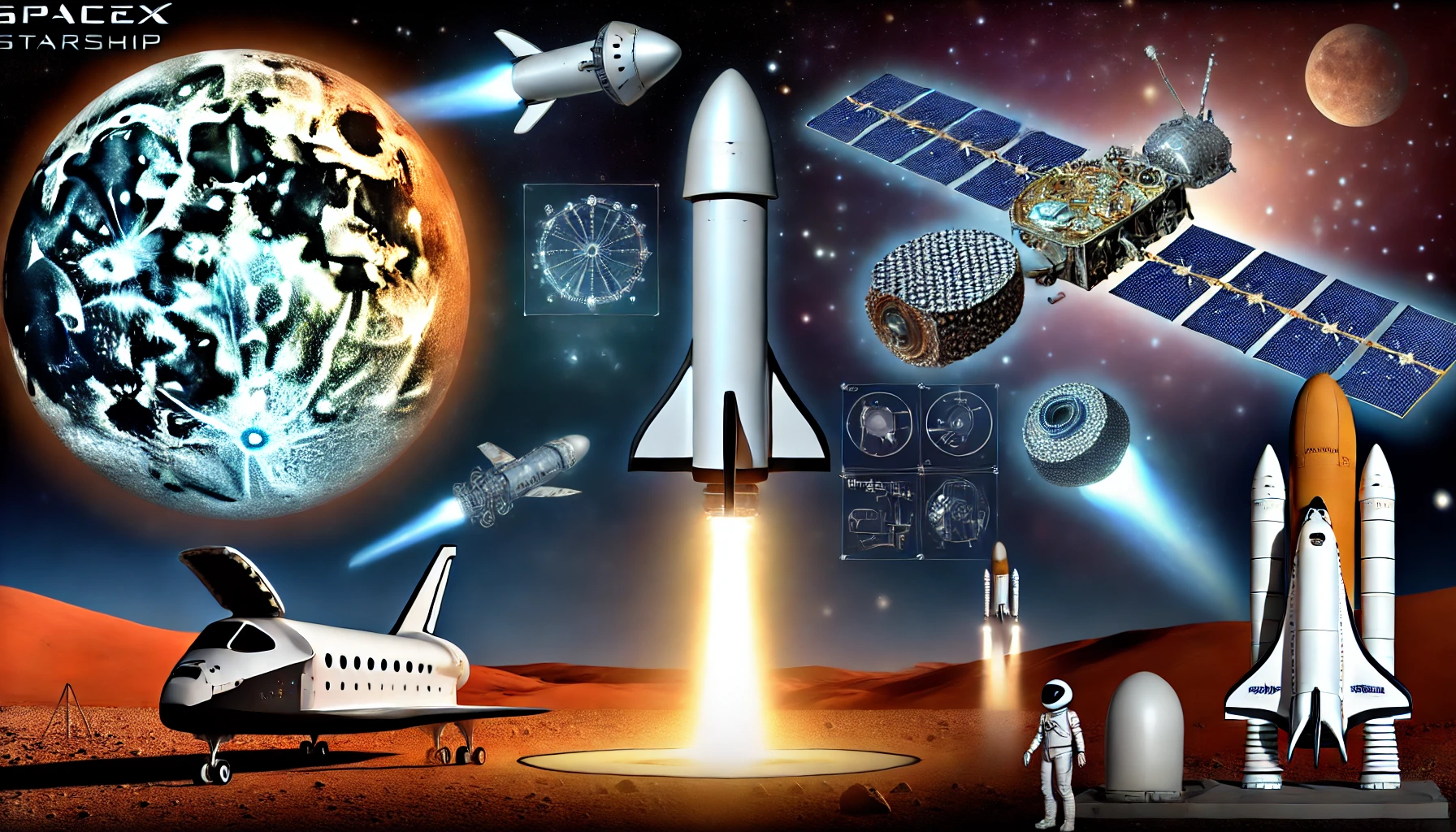SpaceX Starship Missions to Mars and the Moon
SpaceX Starship is redefining space exploration with its ambitious missions to Mars and the Moon. This innovative spacecraft is not only a testament to technological advancement but also a beacon of hope for humanity’s future in space. In this blog, we will delve into various aspects of the SpaceX Starship, including its launches, missions, development, and the latest news updates.
SpaceX Starship: A Revolutionary Leap in Space Exploration
The SpaceX Starship is an advanced spacecraft designed by SpaceX with the primary goal of enabling human exploration of Mars and the Moon. This fully reusable spacecraft is built to carry both crew and cargo, making it a versatile vehicle for various space missions.
Key Features of SpaceX Starship
- Reusable Design: Reducing the cost of space travel by reusing the spacecraft for multiple missions.
- High Payload Capacity: Capable of carrying a large amount of cargo and passengers.
- Advanced Propulsion: Equipped with Raptor engines for efficient space travel.
- Versatility: Suitable for a wide range of missions, from satellite deployment to interplanetary travel.
Starship Launches: Pioneering New Heights
The success of SpaceX Starship launches has been a game-changer in the aerospace industry. These launches demonstrate the spacecraft’s capabilities and pave the way for more ambitious missions in the future.
Notable Starship Launches
- First Successful Launch: Marked a significant milestone in reusable rocket technology.
- High-Altitude Test Flights: Tested the spacecraft’s ability to perform controlled landings and re-launches.
- Orbital Flights: Proved the Starship’s capability to reach and operate in orbit.
SpaceX Mars Mission: A Bold Vision for the Future
One of the most anticipated missions for SpaceX Starship is the Mars mission. Elon Musk’s vision to colonize Mars is becoming increasingly tangible with each successful test and launch.
Goals of the SpaceX Mars Mission
- Human Settlement: Establishing a self-sustaining colony on Mars.
- Scientific Research: Conducting extensive research on Mars’ environment and potential for supporting life.
- Technological Advancements: Developing new technologies to support long-term space habitation.
Challenges of the Mars Mission
- Radiation Exposure: Protecting astronauts from harmful space radiation.
- Life Support Systems: Ensuring sustainable life support systems for long-duration missions.
- Psychological Impact: Addressing the mental health challenges of long-term space travel.
SpaceX Moon Mission: Returning to the Lunar Surface
The SpaceX Starship is also integral to NASA’s Artemis program, which aims to return humans to the Moon. This mission not only seeks to explore the lunar surface but also to establish a sustainable human presence there.
Objectives of the SpaceX Moon Mission
- Lunar Base: Building a base on the Moon for extended missions.
- Resource Utilization: Extracting and using lunar resources to support space missions.
- Scientific Exploration: Conducting experiments and research on the Moon’s surface.
Starship Development: Innovation and Progress
The development of SpaceX Starship involves continuous innovation and rigorous testing. Each iteration of the Starship incorporates lessons learned from previous tests, pushing the boundaries of what’s possible in space travel.
Key Phases in Starship Development
- Prototyping: Building and testing various prototypes to refine the design.
- High-Altitude Tests: Assessing the spacecraft’s performance at high altitudes.
- Orbital Tests: Demonstrating the ability to reach and operate in orbit.
Technical Advancements in Starship Development
- Raptor Engines: Utilizing advanced propulsion technology for greater efficiency.
- Heat Shield: Developing durable heat shields to protect the spacecraft during re-entry.
- Aerodynamics: Optimizing the spacecraft’s design for improved performance.
SpaceX Starship News and Updates
Staying updated with the latest news on SpaceX Starship is crucial for understanding its progress and future missions. Recent developments highlight the spacecraft’s advancements and the challenges it faces.
Recent Starship Updates
- Successful Test Flights: Demonstrations of the spacecraft’s landing and re-launch capabilities.
- New Partnerships: Collaborations with NASA and other space agencies.
- Future Launch Schedules: Upcoming missions and test flights planned for the near future.
The Broader Impact of SpaceX Starship
The innovations brought by SpaceX Starship extend beyond the realm of space exploration. They influence various sectors, including technology, economics, and global cooperation.
Economic Impact
- Cost Reduction: Lowering the cost of space travel and making it more accessible.
- Job Creation: Generating employment opportunities in the aerospace industry.
- Commercial Opportunities: Opening new avenues for commercial space ventures.
Technological Advancements
- Propulsion Technology: Advancements in rocket engines and propulsion systems.
- Materials Science: Development of new materials for spacecraft construction.
- Artificial Intelligence: Integration of AI for autonomous space operations.
The Future of Space Exploration with SpaceX Starship
SpaceX Starship is at the forefront of modern space exploration, pushing the boundaries of what humanity can achieve. Its ambitious missions to Mars and the Moon, along with continuous development and innovation, make it a cornerstone of future space endeavors.
In the final analysis, the SpaceX Starship, with its launches, missions, and development, signifies a new era in space exploration. By addressing challenges and leveraging technological advancements, it paves the way for a future where space travel is more accessible and sustainable.
For more insights into space exploration and technological advancements, visit Regent Studies and stay updated with the latest developments in the field.
By incorporating these emerging trends, the space industry is poised for remarkable growth and innovation. These advancements not only enhance our capabilities but also open new opportunities for exploration and commercialization. As we look to the future, the collaborative efforts of public and private sectors will be crucial in achieving our space exploration goals.
For further reading on the topic, you can visit StartUs Insights for comprehensive reports and analyses.




